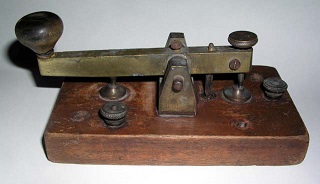

Text messaging is commonly the preferred method of communications, with everything from emergency alerts to appointment reminders and shipment notifications arriving via text.
Sometimes you just want to know who a text message is from, and don’t need to actually take your phone out of your pocket. The Apple Watch and other smart watches solve this problem by putting the notification on your wrist, but sometimes the smart watch is overkill.
Smart phones allow us to assign ring tones and text tones to individual contacts, so we can select from a number of different sounds for different people. This works really well for a small number of contacts, but it can be unwieldy to memorize a large variety of sound effects.
This is where we can benefit from a system that we've had for a long time: International Morse Code.
Morse Code is simple, and uses combinations of short and long tones to communicate letters, numbers, and symbols. Its format is well suited to identifying messages from a large number of contacts.
For many of us, using individual letters or numbers for contacts or groups of contacts are enough. However, the individual letters can be combined to a practically infinite number of unique identifiers.
On my iPhone, I use the Morse "A", or di-dah to identify text messages from Amazon. The letter "U" for UPS (di-di-dah), "V" for Visa (di-di-di-dah), etc. Family gets "N" (dah-dit), etc.
I’m not personally familiar with the method for installing and using ring tones on Android devices, but I imagine it’s as straightforward as with the iPhone. With the iPhone, you can add the ring tones (*.m4r files) to iTunes, then sync them with the device. Once installed on the phone, you edit any contact, and select the text tone you’d like to use for that contact.
Here are the letters of the alphabet and digits in m4r files for use with the iPhone: (NOTE: a ZIP file containing all the individual files is linked to at the bottom of this page)
You can play these directly in your browser, or right-click on the link and save the file to your disk. In iTunes, select File, Add to Library, to add these ringtones to your phone on the next sync.
Morse_A.m4rAnd here are all of the ring tones combined in a ZIP file for easy downloading:
My amateur radio call sign is KG4OJT. If you’d like to contact me, I can be reached at the email address which is my call sign AT toward.com.
Pete Norloff
April, 2015